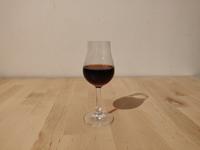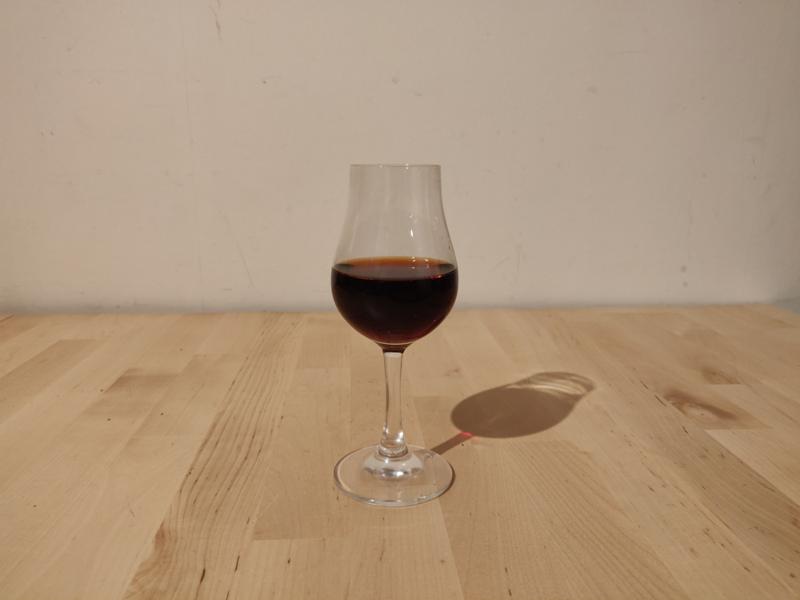Spirit caramel (E150A) in whisky
Contents

Most Scotch, and many Irish whiskies are coloured with the addition of E150A food colouring (commonly known as spirit caramel). That this is not only the case for blends, but incredibly common amoung single malts as well is one of the most controversial topics amoung whisky connoisseurs alongside No Age Statement whiskies and chill-filtration. The use of caramel colouring is common enough and regularly found in soft drinks such as cola. E150A is differentiated from other E150 types as it contains no ammonium or sulfite reactants. E150A is called caustic or plain caramel colour.
Why are whiskies coloured?
Whiskies are coloured for cosmetic reasons, in part because darker whiskies are percieved as as older, and in part to ensure consistency between the various casks. The latter is known as colouring for normalisation and while not especially popular is not intended to be deceptive.
Colouring for normalisation
Casks used for maturation, such as ex-bourbon barrels and Sherry butts, will impart different colouring depending on how often they have been used, and in relation to the length of maturation. First-fill casks naturally give off more colour, than second, third or fourth fills (so-called refill casks). If a master blender is creating a whisky with their focus on flavour then natural variation of colour may result in the final product. To prevent consumers being put off by colour differences between respective vattings a small amount of spirit caramel is added. This is generally known as harmonising or normalisation.
Colouring For Darkening Young Whiskies
A positive side effect, for the producer, of the whisky colouring is that darker whiskies look older. In the case of younger Scotch whiskies, No Age Statements(NAS) and blends in particular, the manufacturers often give use considerably more colouring. Often to the point that NAS whiskies, almost certainly containing younger whiskies, are darker than age statement whiskies from the same distillery. In these cases the real reason for tinting the whisky with spirit caramel is the promotional value of darker whisky.
What is Spirit Caramel (E150A)?
Spirit Caramel refers to high molecular weight, brown compounds that are formed when sugar (sucrose or glucose) is heated in the presence of certain tanning accelerators. The chemical reaction that takes place is the so-called Maillard reaction, which takes place during baking and is responsible for the natural color of bread crusts.
Depending on the tanning accelerator used, caramel has a different E number (E150a, E150b, E150c, E150d). E150A, which mainly contains acetic or citric acid as a tanning accelerator, is used to coloring products with a high alcohol content.

Under European legislation E150A can be used without restriction in foods such as cola, and whisky. Unfortuantely while no legal requirement to declare caramel content exists within the United Kingdom by law if E150 is contained within whisky, this must be declared in a few European countries, Germany included. Thus it is possible for us to know in the main what whiskies are, and are not coloured by caramel.
Does Every Country Colour Whisky?
No this practice is generally limited, both Scotland and Ireland allow the use of spirit caramel, happily a number of countries, America included have prohibited the practice entirely. More recently a handful of distilleries in Scotland have commited to a natural production process. The following distilleries now completely dispense with colouring, producing whiskies without adulteration:
- Arran
- Balblair
- Benriach
- Bruichladdich
- Edradour
- Glenallachie
- Glendronach
- Glenfarclas
- Glenglassaugh
- Glengoyne
- Glengyle
- Glen Scotia
- Highland Park
- Kilchoman
- Macallan
- Springbank
- Tamdhu
Several independent bottlers such as Signatory and Gordon & MacPhail also offer whisky without whisky colouring as standard.
Can you taste caramel in whisky?
No, spirit caramel cannot be discerned as a distinct taste within whisky however a number of taste tests have concluded that it is possible to discern a change in the taste of a whisky, or at least its mouthfeel. Put simply there is not a caramel taste that is recognisable among whiskies, instead repeated tests have demonstrated that it is possible to identify a whisky which contains caramel, from a line up of otherwise identical drams without.
How Does Spirit Caramel Taste?
While the name suggests sweetness in reality spirit caramel is very bitter. The addition of caramel color does not make whisky sweeter, nor even more bitter but has a rounding effect on the spirit.
Is E150 Safe?
Yes, E150A caramel is considered harmless and is permitted for all foods that may contain additives without maximum quantity restrictions. Exposure to the caramel components THI (2-acetyl-4-tetrahydroxybutylimidazole), 4-MEI (4-methylimidazole) and SO2 are considered harmless. For 5-HMF (5-hydroxymethylfurfural) and Furan, the specifications may require limitation in future. Ammonium sulphite caramel (E150D) is known to cramp and lowers the number of white blood cells in high concentrations and so cannot be used.
The Controversy of Coloured Whisky
In the past whiskies were by no means uncoloured, even if sold as they came out of the barrel as these had often been treated in some way, paxarette being a popular example. Likewise any argument to past process is inherently misguided as the whisky drunk today differs significantly from those laid down in decades past. It can also be taken as granted that consumers expect their whisky to be brown, and so whisky colouring for the mass blended market is understandable and probably forgivable. Though may still be an objectionable practice if that usage exceeds normalisation. If that practice continues to whiskies as a promotion of percieved quality it is certainly far worse.
The Deception of Whisky Colouring
Regardless of the disputed change to the taste of whisky, the criticism of whisky colouration with caramel is entirely justified while distilleries themselves continue to promote the colour of their whisky as an indicator of quality. If the colouring of whisky is an admitted cosmetic change then to tell consumers to evaluate the whisky based on coloured is to actively deceive them. Do away with the color evaluation and the practice, although no longer openly dishonest, remains disengenous.
FAQs
Is E150A natural?
No, although E150A is derived from natural sources sugar or corn (in the form of high fructose corn syrup) both the source of sugar, and the resultant caramel colouring will be a refined product. However E150a is a permitted food colour worldwide and is used in numerous food applications.
How is E150a made?
E150 made by the controlled heat treatment of various types of sugar, such as fructose or glucose in the presence of acids, alkalis, or salts. The heating of the sugar to a temperature of 120 ° C to 150 ° C in the prensence of accelerators is known as caramelisation.
Why is caramel added to whisky?
Spirit caramel is added for two reasons, normalising the colour differences caused by differering whisky batches or vattings, and to artificially darken the spirit giving the perception the whisky is older than it appears, By adding caramel (E150) the colour of the whisky can be standardized so that every bottle on the retailer's shelf looks identical.
Why is caramel added to whisky?
Spirit caramel is added for two reasons, normalising the colour differences caused by differering whisky batches or vattings, and to artificially darken the spirit giving the perception the whisky is older than it appears, By adding caramel (E150) the colour of the whisky can be standardized so that every bottle on the retailer's shelf looks identical.
Does E150A have a taste?
E150 has a mild, sweet taste that is similar to caramel, but it is generally used in such small amounts that it does not have a significant impact on the flavor of the finished product. In whisky E150A is generally only detectable by changes to mouthfeel
What is E150A in whisky?
E150A, also known as caramel coloring or caramel colouring, is a food coloring agent that is commonly used in the production of whisky. It is made by heating carbohydrates, such as glucose or invert sugar, to high temperatures in the presence of acids, alkalis, or other catalysts. This process creates a range of colored compounds, including various shades of brown, which are used to give whisky its characteristic amber color. E150A is approved for use in food and beverages by many regulatory bodies, including the European Food Safety Authority and the United States Food and Drug Administration. It is considered safe for consumption, although some people may have adverse reactions to it.
Is E150A vegetarian friendly?
Yes E150A can be consumed by vegans and vegetarians
Previous

